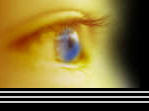|
| Alexander the Great |

|
http://www.bbc.co.uk/history/ancient/romans/pompeii_art
This is a photo of an ancient mosaic to have actually survived the
disaster. It is a painting of Alexander the Great, when he defeats the Persian King Darius, as he illistrates himself in the
mosaic painting. It measures 19ft x 10ft 3 in. It is made around small mosaic tiles. The painting of Alexander the Great was
found in the largest house in Pompeii, The house of the Faun, in a room overlooking the garden of the house.
| Flagellation and a dancer from fresco |

|
http://www.bbc.co.uk/history/ancient/romans/pompeii_art
This is an image from a fresco that tends to normally run around all
four walls of a room, and it represents actual life-size figures. It is very common to see these unique wall paintings throughout
the uncovered homes of Pompeii.
| Lararium from the House of the Vetti |
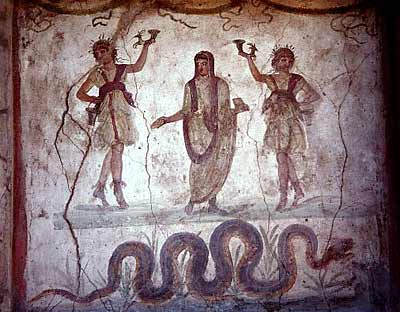
|
http://www.bbc.co.uk/history/ancient/romans/pompeii_art
These sort of paintings were found throughout the homes of Pompeii
in different shapes and forms. Ranging from just a simple painting to large shrines. Lararia are shrines to the gods of the
household. In the painting there are two dancing lares, which are guardians of the family who protect everyone from threats.They
are always on both sides of the middle person, which is what the citizens call him the "genius". Who represents the spirit
of the male of the household, and they are always dressed in togas and making a sacrifice. The snake beneath them is usually
always placed somewhere through out the painting. It represents the guardians spirits of the family.
| Modern Italian fresco |
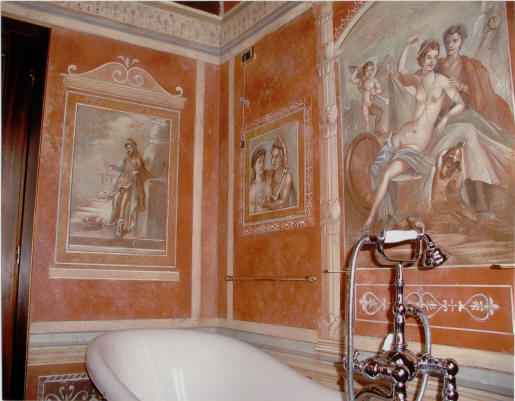
|
http://www.lifeinitaly.com/Tourism/campania/pompeii.asp
The wall frescos were found in every house of Pompeii and the entire city literally ulliimated with colorful beauty from
the paintings.
| Hidden Artwork |
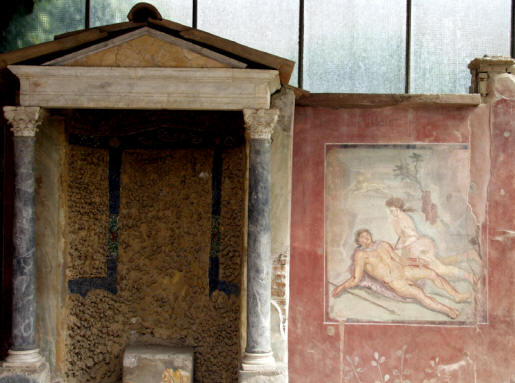
|
http://www.lifeinitaly.com/Tourism/campania/pompeii.asp
This painting was found in a room called " Cabinet of Obscene Objects."
The reason the room has this name is because for a long time until it was fully uncovered it was hidden from public view.
Only men pompeiians new exactly where this painting was located. Back then woman tourists and citizens were not able to view
erotic artwork until the second half of the twentienth century, in order to protect the nature of the woman.
| Athenian hero Theseus |
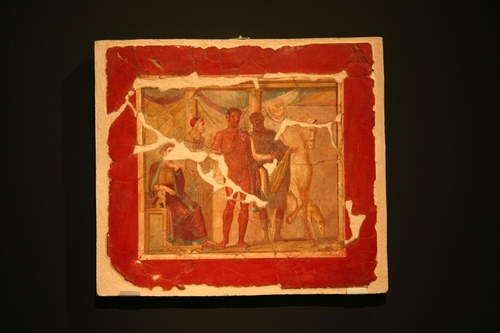
|
This is a painting of Athenian hero Theseus who took on many tasks
and adventures.
http://ancienthistory.about.com/od/pompeii/ig/A-Day-in-Pompeii/Pompeiian-Garden-Fresco.htm
| Pompeiian fresco |
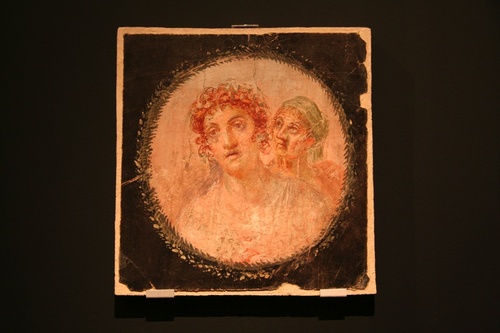
|
A fresco of a woman with an older woman behind her in two frames
of leaves.
http://ancienthistory.about.com/od/pompeii/ig/A-Day-in-Pompeii/Pompeiian-Garden-Fresco.htm
| A fresco from the House of the Gold Bracelets |
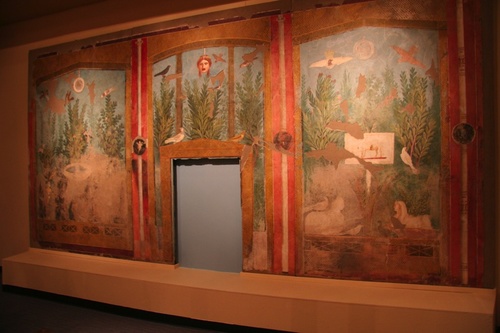
|
The fresco above is in three different sections, but was once on
a wall of the House of the Gold Bracelets in Pompeii.
http://ancienthistory.about.com/od/pompeii/ig/A-Day-in-Pompeii/Pompeiian-Garden-Fresco.htm
| De Architectura |
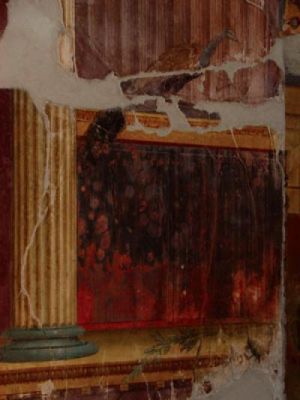
|
A Wall painting called "De Architectura" created
2000 years ago that still remains in tact today.
| A painting of Bacchus at Mount Vesuvius |
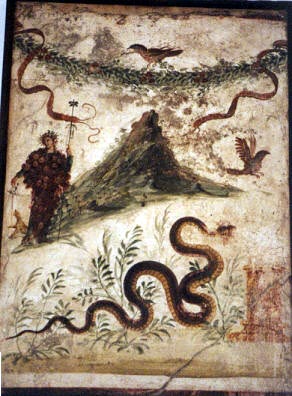
|
Another fresco painting representing the symbolic people of Pompeii.
http://news.softpedia.com/news/The-Mysteries-of-the-Pompeii-039-s-Paintings-39160.shtml
|
